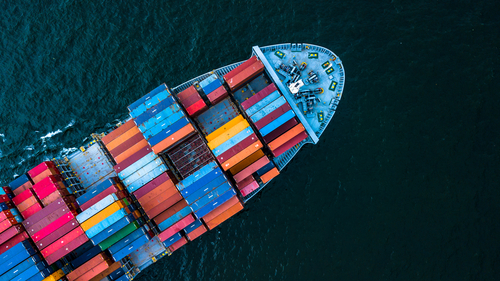Moving packages overseas can cost a small fortune. As a retailer, you’ll need to get your packages through customs as they make the long journey to another country. You also have to think about protecting your products along the way, especially if they will be left unsupervised.
According to Pitney Bowes, as of 2017, 70 percent of online shoppers shop internationally, marking a six percent increase from 2016. The internet lets shoppers experience products from other countries, but you need to figure out how to do this cheaply and effectively without ruining your products in the process.
METAL STORAGE CONTAINERS CAN PROTECT YOUR PRODUCT
Considering the cost of international shipping, many online retailers are turning to what’s known as peer-to-peer shipping. Instead of handing your product off to a delivery driver, you give it to a traveler who’s making their way to the destination country.
Why Peer-to-Peer Shipping?
This may sound strange, but shipping a small personal item thousands of miles doesn’t make a lot of sense when this person has plenty of room in their suitcase. Peer-to-peer shipping also simplifies the customers’ process and the importing process. You don’t have to wait for your merchandise to be loaded off the container vessel. As soon as the traveler makes their way out of the airport, your goods will have arrived safe and sound.
Websites and apps will connect you to local travelers making their way overseas. You then list information about your product, including the contents, size, weight and estimated value. The traveler will then confirm they have room for the package on their trip. These services will verify the traveler in question to make sure they are up to the task at hand. You don’t have to worry about leaving your goods with a complete stranger.
SHOP FROM OUR ASSORTMENT OF PLASTIC REUSABLE PALLET CONTAINERS
The system will then connect these travelers to local delivery drivers and drop-off points so they can finish the last leg of the journey once they arrive. The item will then arrive at the final destination.
Saving Time and Money
When leaving your package with a traveler, you don’t have to spend as much money on shipping and storage. Eschewing traditional logistics companies will help you save a fortune over time. You can ship off smaller items at around half the price you normally would.
The product will likely travel in the person’s suitcase, reducing the chances of damage and turbulence. You can also use metal storage containers to further safeguard your products during transit. Share the dimensions of the container with the traveler to make sure they have enough space.
Working with individuals can also make the shipping process more transparent. You will have a direct line to the person carrying your package so you don’t have to rely on automatic updates and GPS trackers. In some cases, the person can also personally check on the item for you to make sure it is safe.
Working with Other Companies
Peer-to-peer international shipping is often best suited to smaller products, but you can also partner with companies that would normally make this trip as well. Reach out to companies that deliver to similar regions to piggyback off their existing infrastructure. Paying these companies to ship your goods is often much cheaper than sending your goods through traditional channels. These companies are also looking to make an extra buck as they use their existing equipment.

You may have to adapt your packages according to company’s specifications. For example, industrial equipment manufacturers often use pallet containers, so you might have to fit your products into one of these containers as well.
The same goes for skid plates and pallets. Some companies prefer using skids with a top plate online. You’ll have to learn what a skid plate is in shipping so you can secure your products before handing them off to the other company.
Peer-to-peer shipping can take many forms. It’s just about passing your package off to another party that’s already headed to the destination to save on shipping. This also reduces greenhouse gas emissions by making use of existing resources. However, be prepared to adjust your shipping practices based on what’s available in your area. Your options may be limited when comparing local companies and travelers, so consider sending merchandise to coastal areas with more international activity.
Keep this option in mind as you look for a more sustainable way to move your products overseas.

